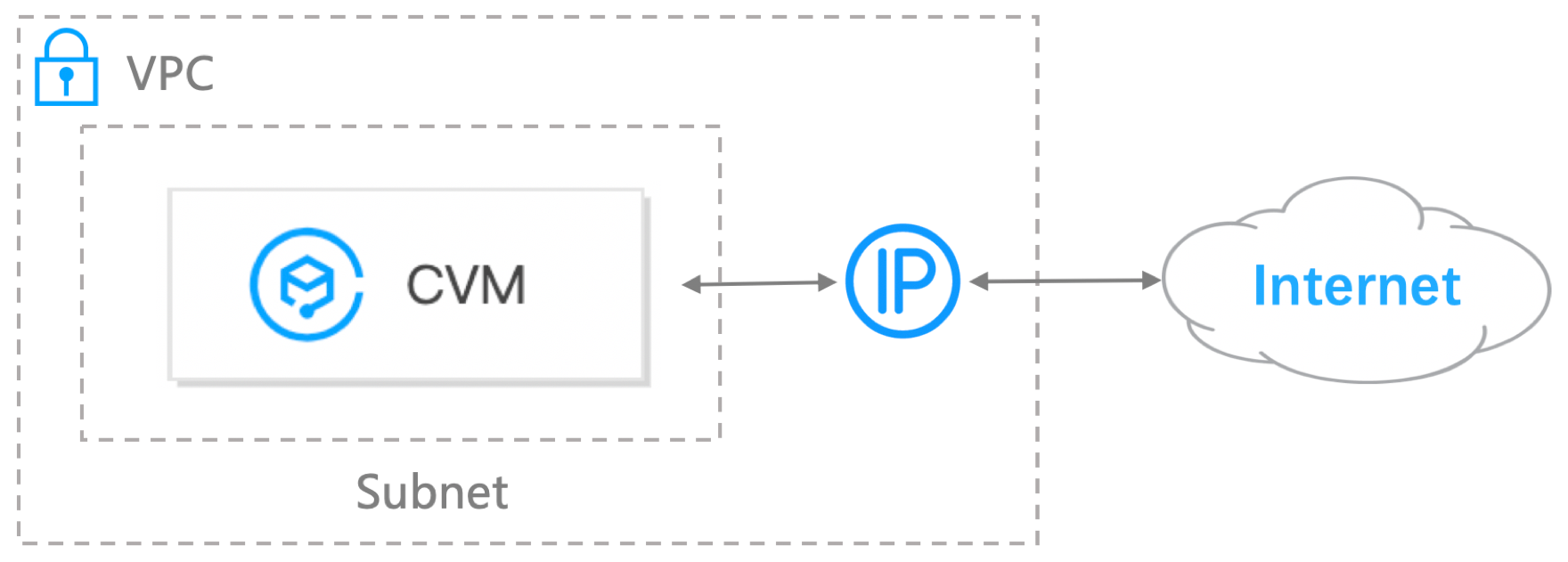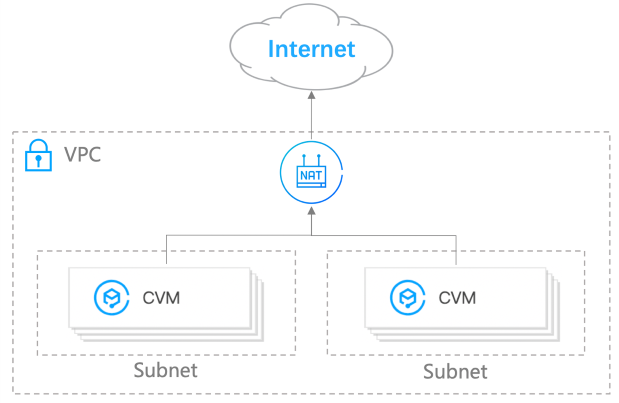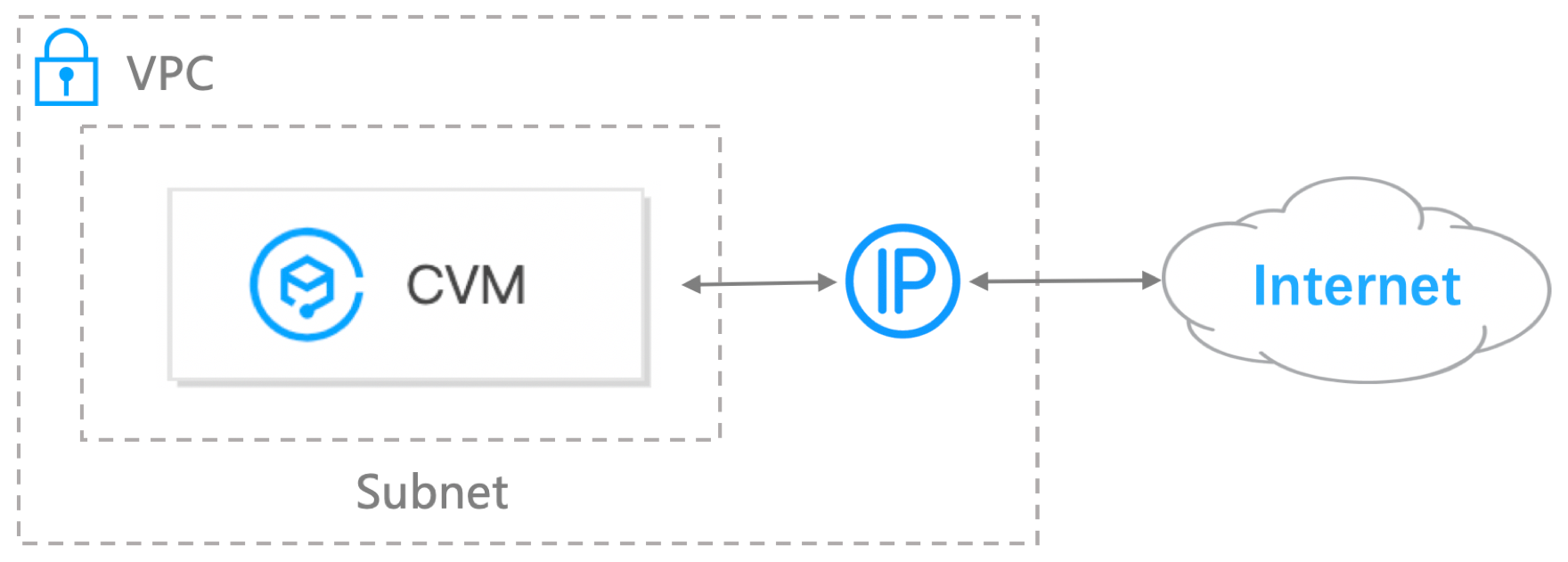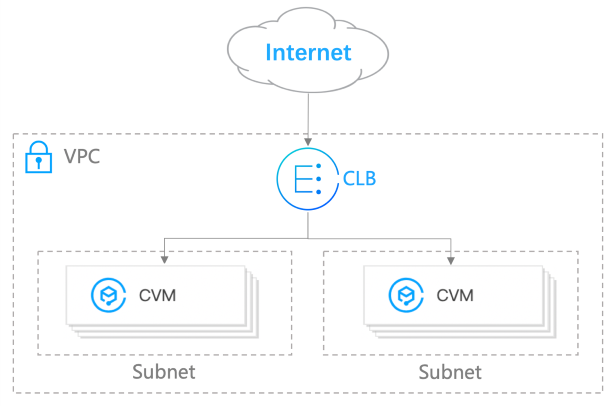Virtual Private Cloud
- Release Notes and Announcements
- Product Introduction
- Purchase Guide
- Quick Start
- VPC Connections
- Operation Guide
- Virtual Private Cloud (VPC)
- Classiclink
- Subnets
- Route Tables
- IPs and ENIs
- Network Connection
- Security Management
- Security Groups
- Managing Security Groups
- Managing Security Group Rules
- Network ACL
- Parameter Template
- Diagnostic Tools
- Traffic Mirroring
- Practical Tutorial
- Migrating from the Classic Network to VPC
- Best Practices of Security Group Change
- Troubleshooting
- API Documentation
- Making API Requests
- VPC APIs
- Route Table APIs
- Elastic Public IP APIs
- Elastic IPv6 APIs
- Highly Available Virtual IP APIs
- ENI APIs
- Bandwidth Package APIs
- NAT Gateway APIs
- Direct Connect Gateway APIs
- Cloud Connect Network APIs
- Network ACL APIs
- Network Detection-Related APIs
- Flow Log APIs
- Gateway Traffic Monitor APIs
- Private Link APIs
- Other APIs
- Subnet APIs
- VPN Gateway APIs
- Security Group APIs
- Network Parameter Template-Related APIs
- Snapshot Policy APIs
- FAQs
Use Cases
Last updated: 2024-10-22 15:26:10
Accessing the Internet
Single CVM
When the traffic to your business is low and only one CVM is available, you can apply for a public IP address and bind it with the CVM to gain access to the Internet.

Multiple CVMs
When you have multiple CVMs that need to access the Internet simultaneously and you do not want the private network addresses of the CVMs to be exposed, you can use NAT Gateway. The NAT gateway provides the SNAT feature and allows multiple CVMs to access the Internet with public IP addresses on the NAT gateway. Moreover, without the configuration of the DNAT feature, external users cannot directly access the NAT gateway, ensuring security. When multiple public IP addresses exist on the NAT gateway, the NAT gateway automatically performs load balancing.

Providing Services to the Internet
Single CVM
You can host services (such as website services) on a VPC-based CVM and use a public IP address to provide services to external users.

Mutiple CVMs
When you have many CVMs for deploying complex services and the Internet traffic is high, you can use the Cloud Load Balancer (CLB). The CLB can automatically distribute application access traffic among CVM instances in the cloud, enhancing fault tolerance for applications.

Disaster Recovery for Applications
Cross-Availability Zone Disaster Recovery
A subnet is associated with a availability zone. You can create subnets in different availability zones of one VPC in a region. By default, different subnets of the same VPC interconnect through the private network. You can deploy resources in subnets of different availability zones to achieve cross-availability zone disaster recovery.

Cross-Region Disaster Recovery
You can deploy businesses across regions (for example, the 2-region-3-DC solution) to achieve cross-region disaster recovery.

Deploying a Hybrid Cloud
Connecting to Local IDCs
VPC provides multiple connection modes, such as direct connect and VPN connection, which can connect your local IDCs with VPC instances in the cloud to easily create a hybrid cloud architecture. Using local IDCs ensures the security of your core data. You can expand resources (such as CVMs and TencentDB) in the cloud based on your business volume to reduce IT Ops costs.

Global Multi-Point Interconnection
When you have businesses deployed in multiple regions around the world and require cross-region interconnection, you can use products such as CCN and Direct Connect to enable global multi-point interconnection through single-point access.

Was this page helpful?
You can also Contact Sales or Submit a Ticket for help.
Yes
No

